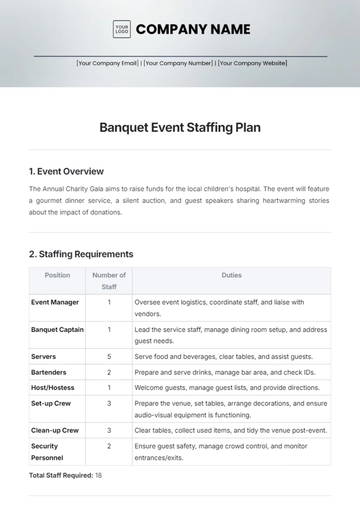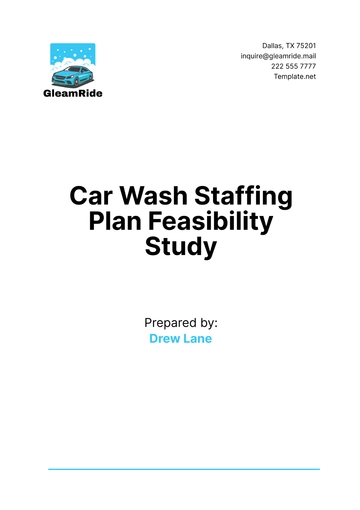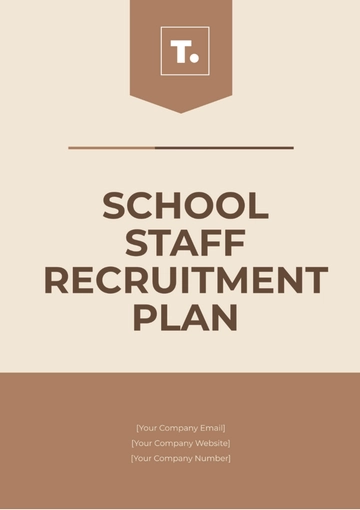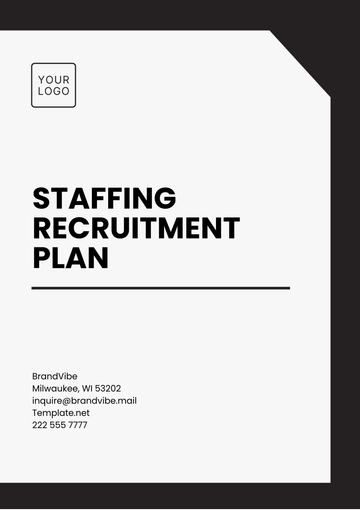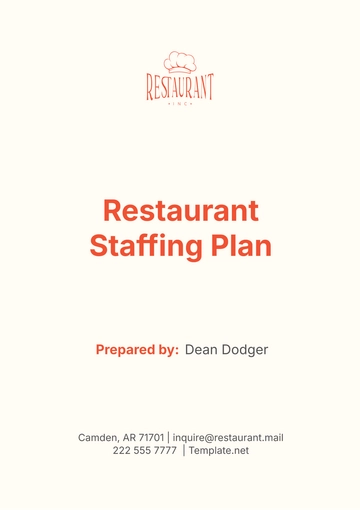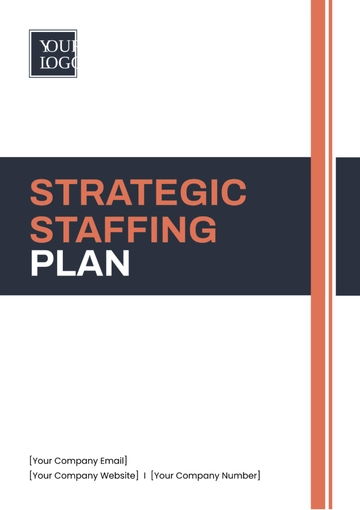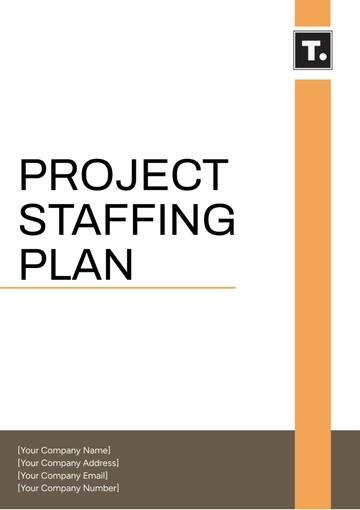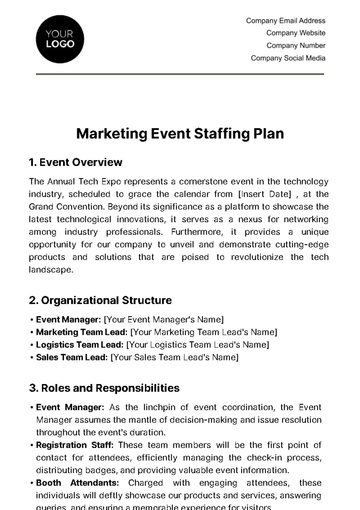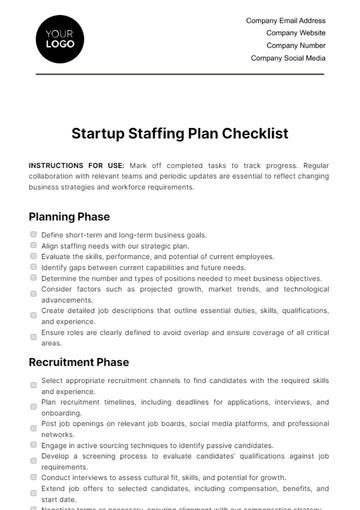Free Strategic Staffing Plan
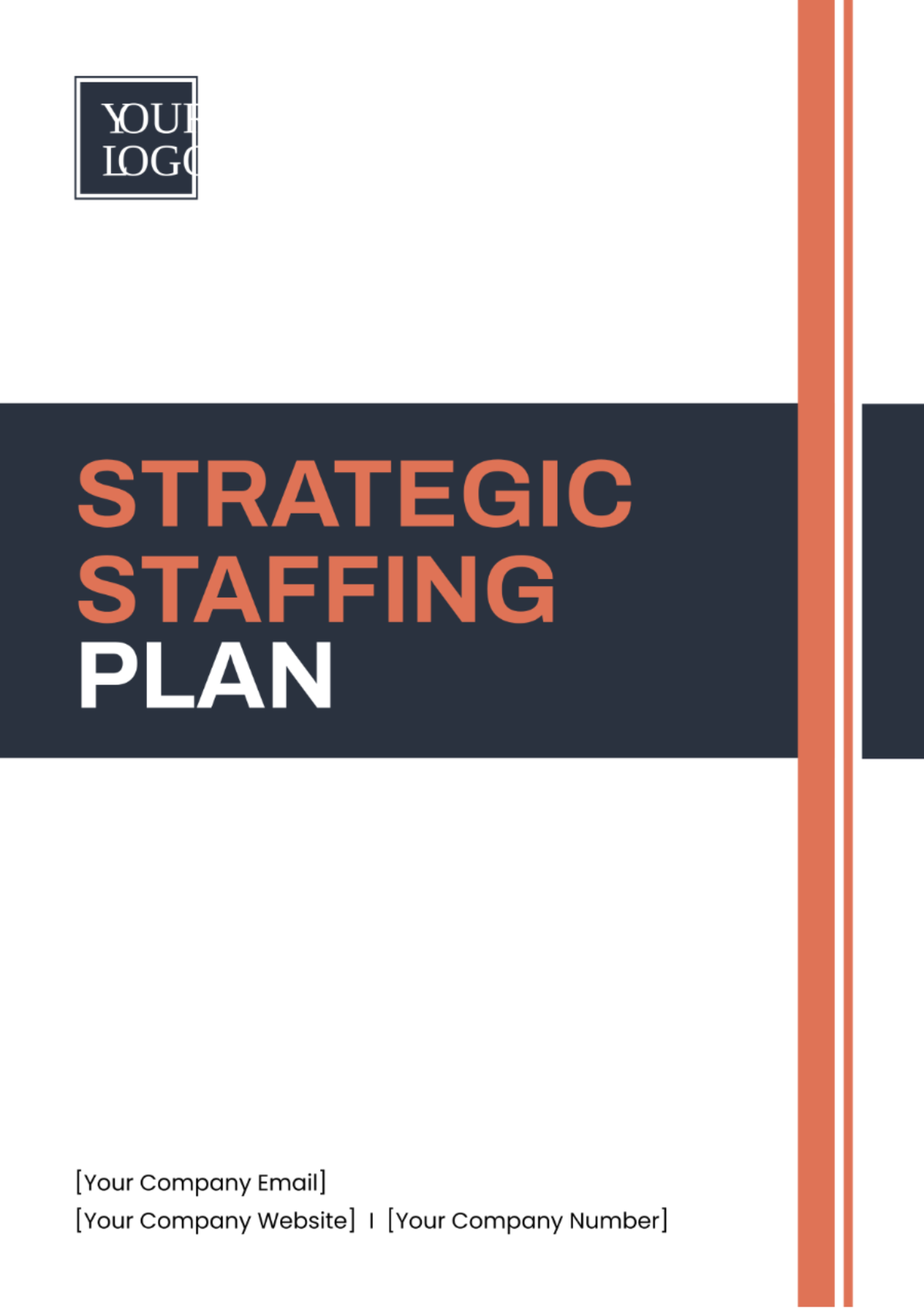
Prepared by [YOUR NAME]
I. Executive Summary
This Strategic Staffing Plan, crafted for [YOUR COMPANY NAME], provides a comprehensive roadmap for anticipating and planning future workforce needs. It considers internal dynamics and external market factors to ensure sustainable, strategic growth and competitiveness. Key findings and recommendations are summarized below.
II. Introduction
This document outlines strategies to identify, attract, retain, and develop talent in alignment with the strategic objectives of [YOUR COMPANY NAME]. It addresses current and future staffing requirements necessary to achieve corporate goals.
III. Organizational Overview
[YOUR COMPANY NAME] is a leading IT solutions provider dedicated to revolutionizing digital experiences.
Our mission is to empower businesses with cutting-edge technology solutions that drive growth and innovation.
Our vision is to be the foremost innovator in the IT industry, delivering transformative solutions that shape the future of technology.
IV. Goals and Objectives
The primary aim of this Strategic Staffing Plan is to align workforce capabilities with the strategic objectives of [YOUR COMPANY NAME] over the coming [Number of years]. Specific objectives include:
Identifying critical roles and skills needed for future growth in areas such as software development, cybersecurity, and cloud services.
Developing a sustainable talent pipeline to meet the demands of emerging technologies.
Enhancing workforce flexibility and adaptability to respond to changing market needs.
Improving employee engagement and retention in the competitive IT industry.
V. Situational Analysis
A. Internal Factors:
Workforce Demographics: The current workforce consists of [X%] millennials, [X%] Gen X, and [X%] baby boomers.
Skills Inventory: Skills in high demand include programming languages (e.g., Java, Python, C#), cybersecurity, cloud computing, and data analytics.
Turnover Rates: The turnover rate in the past year was [X%], with the highest turnover occurring in [DEPARTMENT/ROLE].
Employee Satisfaction: Employee satisfaction surveys indicate that [X%] of employees are satisfied with their job and [X%] feel engaged in their work.
Training and Development: [YOUR COMPANY NAME] has allocated [AMOUNT] for training and development programs in the current fiscal year.
B. External Factors:
Labor Market Trends: The IT labor market is experiencing a shortage of skilled workers in areas such as cybersecurity and data science.
Economic Conditions: The current economic climate is favorable for the IT industry, with increasing demand for IT services and solutions
Industry Developments: Recent industry developments include advancements in artificial intelligence (AI), Internet of Things (IoT), and blockchain technology.
Technological Advancements: Emerging technologies such as AI, machine learning, and automation are transforming the IT landscape.
VI. Workforce Planning Strategies
A. Demand Forecasting:
Projected Growth: [YOUR COMPANY NAME] anticipates a growth rate of [X%] over the next [NUMBER] years.
Strategic Business Goals: Key strategic business goals driving staffing needs include expanding service offerings, entering new markets, and improving customer satisfaction.
B. Supply Analysis:
Talent Pool: The current talent pool includes [NUMBER] candidates with expertise in software development, cybersecurity, cloud computing, and data science.
Attrition Rates: The attrition rate for the past year was [X%], with the highest attrition occurring in [DEPARTMENT/ROLE].
C. Gap Analysis:
Skills Shortfalls: There is a shortage of skills in cybersecurity, data science, and emerging technologies.
Surplus Skills: Skills in [SPECIFIC AREAS] are in surplus, requiring a reallocation of resources to areas of higher need.
D. Action Plan:
Recruitment Strategies: Implement targeted recruitment strategies to attract talent with the required skills.
Training and Development Programs: Develop training programs to upskill existing employees and address skills gaps in emerging technologies.
VII. Implementation Timeline
Phase 1: Talent Acquisition and Onboarding
Duration: 3 months
Tasks:
Identify key roles and skills needed for immediate recruitment.
Develop job descriptions and advertise openings on relevant platforms.
Conduct initial screenings and interviews.
Extend offers and onboard new hires.
Phase 2: Training and Development
Duration: 6 months
Tasks:
Conduct skills gap analysis for existing employees.
Develop training programs for AI and machine learning.
Implement cross-training initiatives to enhance workforce flexibility.
Evaluate training effectiveness and adjust programs as needed.
Phase 3: Strategic Alignment and Continuous Improvement
Duration: Ongoing
Tasks:
Align staffing strategies with long-term business goals.
Monitor industry trends and adjust staffing plans accordingly.
Establish feedback systems for employee input on staffing plans.
Enhance staffing methods for better efficiency and effectiveness.
VIII. Budget and Resources:
Recruitment Budget: [AMOUNT] allocated for recruitment activities, including advertising, recruitment agencies, etc.
Training Budget: [AMOUNT] allocated for training and development programs.
Technology Budget: [AMOUNT] allocated for technology upgrades to support staffing initiatives.
IX. Evaluation and Metrics:
Hiring Efficiencies: Measure hiring efficiencies by tracking time-to-fill metrics for key positions.
Employee Retention Rates: Monitor employee retention rates to gauge the effectiveness of retention strategies.
Training Program Effectiveness: Evaluate training program effectiveness by tracking employee performance metrics before and after training.
X. Risk Management and Contingency Planning:
Risk: Talent Shortage
Contingency Plan: Develop partnerships with universities and training institutions to build a talent pipeline.
Risk: Economic Downturn
Contingency Plan: Implement cost-saving measures and focus on retaining key talent.
XI. Conclusion
This Strategic Staffing Plan equips [YOUR COMPANY NAME] with a robust framework to strategically manage its workforce in line with its business objectives.
By identifying key talent needs, implementing targeted recruitment and training programs, and continuously evaluating staffing strategies, [YOUR COMPANY NAME] aims to enhance its competitive edge, drive innovation, and achieve sustainable growth in the dynamic IT market.
- 100% Customizable, free editor
- Access 1 Million+ Templates, photo’s & graphics
- Download or share as a template
- Click and replace photos, graphics, text, backgrounds
- Resize, crop, AI write & more
- Access advanced editor
Optimize your workforce with the Strategic Staffing Plan Template from Template.net. This customizable, downloadable, and printable template provides a comprehensive framework for strategic staffing planning. With editable features in our AI Editor Tool, tailor the plan to your organization's specific needs. Streamline your staffing strategy and ensure success with this invaluable resource.
You may also like
- Finance Plan
- Construction Plan
- Sales Plan
- Development Plan
- Career Plan
- Budget Plan
- HR Plan
- Education Plan
- Transition Plan
- Work Plan
- Training Plan
- Communication Plan
- Operation Plan
- Health And Safety Plan
- Strategy Plan
- Professional Development Plan
- Advertising Plan
- Risk Management Plan
- Restaurant Plan
- School Plan
- Nursing Home Patient Care Plan
- Nursing Care Plan
- Plan Event
- Startup Plan
- Social Media Plan
- Staffing Plan
- Annual Plan
- Content Plan
- Payment Plan
- Implementation Plan
- Hotel Plan
- Workout Plan
- Accounting Plan
- Campaign Plan
- Essay Plan
- 30 60 90 Day Plan
- Research Plan
- Recruitment Plan
- 90 Day Plan
- Quarterly Plan
- Emergency Plan
- 5 Year Plan
- Gym Plan
- Personal Plan
- IT and Software Plan
- Treatment Plan
- Real Estate Plan
- Law Firm Plan
- Healthcare Plan
- Improvement Plan
- Media Plan
- 5 Year Business Plan
- Learning Plan
- Marketing Campaign Plan
- Travel Agency Plan
- Cleaning Services Plan
- Interior Design Plan
- Performance Plan
- PR Plan
- Birth Plan
- Life Plan
- SEO Plan
- Disaster Recovery Plan
- Continuity Plan
- Launch Plan
- Legal Plan
- Behavior Plan
- Performance Improvement Plan
- Salon Plan
- Security Plan
- Security Management Plan
- Employee Development Plan
- Quality Plan
- Service Improvement Plan
- Growth Plan
- Incident Response Plan
- Basketball Plan
- Emergency Action Plan
- Product Launch Plan
- Spa Plan
- Employee Training Plan
- Data Analysis Plan
- Employee Action Plan
- Territory Plan
- Audit Plan
- Classroom Plan
- Activity Plan
- Parenting Plan
- Care Plan
- Project Execution Plan
- Exercise Plan
- Internship Plan
- Software Development Plan
- Continuous Improvement Plan
- Leave Plan
- 90 Day Sales Plan
- Advertising Agency Plan
- Employee Transition Plan
- Smart Action Plan
- Workplace Safety Plan
- Behavior Change Plan
- Contingency Plan
- Continuity of Operations Plan
- Health Plan
- Quality Control Plan
- Self Plan
- Sports Development Plan
- Change Management Plan
- Ecommerce Plan
- Personal Financial Plan
- Process Improvement Plan
- 30-60-90 Day Sales Plan
- Crisis Management Plan
- Engagement Plan
- Execution Plan
- Pandemic Plan
- Quality Assurance Plan
- Service Continuity Plan
- Agile Project Plan
- Fundraising Plan
- Job Transition Plan
- Asset Maintenance Plan
- Maintenance Plan
- Software Test Plan
- Staff Training and Development Plan
- 3 Year Plan
- Brand Activation Plan
- Release Plan
- Resource Plan
- Risk Mitigation Plan
- Teacher Plan
- 30 60 90 Day Plan for New Manager
- Food Safety Plan
- Food Truck Plan
- Hiring Plan
- Quality Management Plan
- Wellness Plan
- Behavior Intervention Plan
- Bonus Plan
- Investment Plan
- Maternity Leave Plan
- Pandemic Response Plan
- Succession Planning
- Coaching Plan
- Configuration Management Plan
- Remote Work Plan
- Self Care Plan
- Teaching Plan
- 100-Day Plan
- HACCP Plan
- Student Plan
- Sustainability Plan
- 30 60 90 Day Plan for Interview
- Access Plan
- Site Specific Safety Plan
